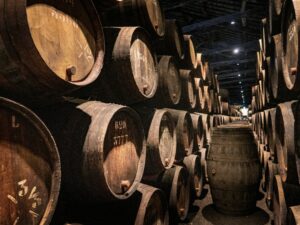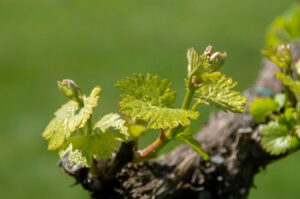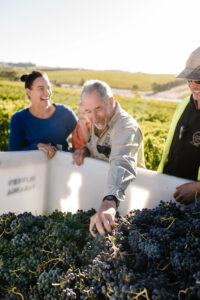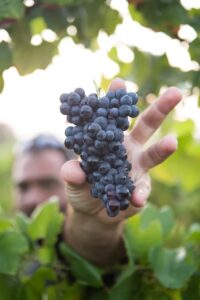In the world of wines, the term “vintage” or stated year holds a special significance. It is not just a year on a label but also represents the growing year of weather conditions, vinification decisions and the passage of ageing time.
In this journey from the vineyards to cellars, we will delve into the art of crafting vintage wines, understanding what sets them apart from their non-vintage counterparts, and sharing insights on how to build your cellar with vintage wines.
Vintage vs. Non-Vintage Wines
 Vintage can be applied to a variety of wines, including still, sparkling, and fortified. Champagnes and Ports are excellent examples of how a specific year’s grapes can produce nuanced flavours. In contrast, Sherries are made in the Solera system (where old vintage wines are topped up with new vintage wine over and over again), it allows for a complex and deep flavour profile to develop over time.
Vintage can be applied to a variety of wines, including still, sparkling, and fortified. Champagnes and Ports are excellent examples of how a specific year’s grapes can produce nuanced flavours. In contrast, Sherries are made in the Solera system (where old vintage wines are topped up with new vintage wine over and over again), it allows for a complex and deep flavour profile to develop over time.
Vintage wines
Wines made from grapes harvested in a specific year, reflecting the unique characteristics of that particular growing season.
- Northern Hemisphere: the grape growing season is between April and October, while harvest is usually from August onwards. When the wine was made from August 2022 harvested grapes, it would be labelled as 2022 vintage on the bottle.
- Southern Hemisphere: the growing season is between October and April, harvest takes place from late January onwards. The vintage year will be the year of harvest.
Non-vintage wines:
Wines crafted from grapes harvested in different years.
What makes a good year (vintage)?
It all begins with the weather of the growing seasons and harvest conditions. The weather in wine regions can vary every year and different grape varietals will react to it differently.
Spring
 Spring frosts and hail storms are nightmares for producers in regions with continental climates, such as Burgundy, Champagne and Germany. It destroys the crops’ buds before they flower. This results in significantly low harvest volume and sometimes by losing them all! Depending if summer arrives early enough to provide a long enough growing season, these hazards may not be the deal breaker of the year.
Spring frosts and hail storms are nightmares for producers in regions with continental climates, such as Burgundy, Champagne and Germany. It destroys the crops’ buds before they flower. This results in significantly low harvest volume and sometimes by losing them all! Depending if summer arrives early enough to provide a long enough growing season, these hazards may not be the deal breaker of the year.
Summer
Significant rainfall or even floods during the summer can cause either the loss of crops or fungal diseases which will ruin grapes. On the other hand, extreme heat waves and drought will stop vines to grow. Overdose of sun and extreme heat can also burn the grapes or cause over-ripen fruits, which the acidity from fruits will be offset by the high sugar level. All these factors can contribute to grapes’ quality and their ageing potential.
Autumn
This is the key timing of the year as it plays an important role in influencing the grapes’ ripening condition, hence their quality and flavour. Too much rainfall will dilute the grapes’ concentration or even rot; cold weather may cause under-ripened grapes; extremely high temperatures will over-ripe the grapes and lead to flabby wines.
Harvest condition
The harvest conditions are equally vital. A carefully timed grape-picking process can elevate a vintage’s overall quality. Different grape varietal reacts differently to weather conditions. For example, Shiraz thrives in hot and dry summer, while Pinot Noir dislike excessive sun exposure and prefers cool and moderate weather.
Tips: It is important to note that what makes a good vintage of red wine may differ from that of white wine in the same region, and vice versa.
A balanced mix of these elements can lead to a standout vintage but can also lead to a disastrous year for producers. Not to mention with increasingly frequent extreme weather in the past decades, growers and producers tend to invest more and more attention in the field to secure and enhance the harvest quality.
Expensive Wine = Good year (vintage)?
Vintage price variation is a dance between climate conditions, yield, winemaking methods, production volume and even the historical events of that year!
Climate
A favourable climate often leads to a better vintage, resulting in wines with a concentrated flavour profile, balance of acidity and solid tannic structure. All these contribute to higher ageing potential. This potential, in turn, can command higher prices due to the promise of superior quality as the wine matures in the bottle.
Yield
Low yield means low quantity of harvest. In years with challenging weather conditions, this may not be a bad thing! With a smaller amount of fruits on each vine, more nutrition will be concentrated in each fruit, resulting in denser flavours in fruits and hence the wine. In this scenario, wine price may be marked higher given its quality and to offset the comparatively low volume.
Winemaking
The adjustments in winemaking methods adapted to different vintages can significantly influence the price of wines. In years with exceptional grape quality and favourable weather, winemakers may opt for time-intensive techniques such as extended maceration and precise blending to extract the utmost expression from the harvest. These labour-intensive processes often elevate wines with complexity, depth, and ageing potential, thereby commanding higher prices due to their exceptional quality and potential for graceful maturation.

Conversely, in challenging vintages where grapes may lack optimal ripeness or balance, winemakers may employ interventionist approaches to make wines for more immediate consumption. The winemaking choices made in different vintages considerably impact the final character and longevity of the wine, subsequently influencing its perceived value and market price.
Special vintage in a special year
Vintage wines hold more than just grapes quality or the winemaking process, they bear witness to the challenges and triumphs of the past. It is the emotional significance and collectable nature that makes each bottle unique. Wines produced during times of war can hold a special place in the hearts of collectors. Collaborations with other brands can also create one-of-a-kind limited edition Cuvees. Just like Bruno Paillard’s unique cuvee for the Orient Express in the 1980s. These wines are more than just a drink, they are a piece of history waiting to be collected.
Tips: To navigate this intricate web, reference to vintage charts from Robert Parker and Wine Enthusiast that cover a wide range of wine regions is a helpful starting point.
The balancing act – Non-Vintage Wines
While vintage wines hold a certain allure, non-vintage wines have their role to play. Apart from some particular producers, the majority of them craft non-vintage wines for the following reasons.
- Mitigating risk
NV wines can be a buffer against the loss of crops or poor harvest associated with unpredictable mother nature. - Business sustainability
Enable producers to maintain a steady production volume, supporting the sustainability of their business. - Building a house style
Take Champagne houses for instance. They often reserve their finest grapes for vintage Champagnes while using non-vintage blends to maintain a consistent house style – creating a “bread-and-butter” Champagne to accommodate the vast consumer base. - Pushing the boundaries
Although most still wines are vintage-specific, modern winemakers are experimenting with different processes. Channing Daughters’ Over and Over is an excellent example, blending red wine grapes from 2004 to 2020 in the Solera system. This allows for a unique and innovative flavour profile that showcases the potential of winemaking.
Only ONE shot a year…
A once-a-year harvest indicates one shot for the wine producers per year. Unlike other beverage production, where multiple batches can be created throughout the year, winemakers have just one crucial opportunity to craft their wine based on the annual harvest. This critical moment, shaped by weather, expertise, and dedication, defines the essence of vintage wines.
This Blog post is written by Sharon Wong
Consumer Sales and Marketing Manager of Wanderlust Wine
Sharon is the the driving force behind our website, wine club, marketing activities, and Wanderlust Wine events.
The post What is Special About Vintage Wines: From Harvesting and Winemaking to Insights appeared first on Wanderlust Wine.
















